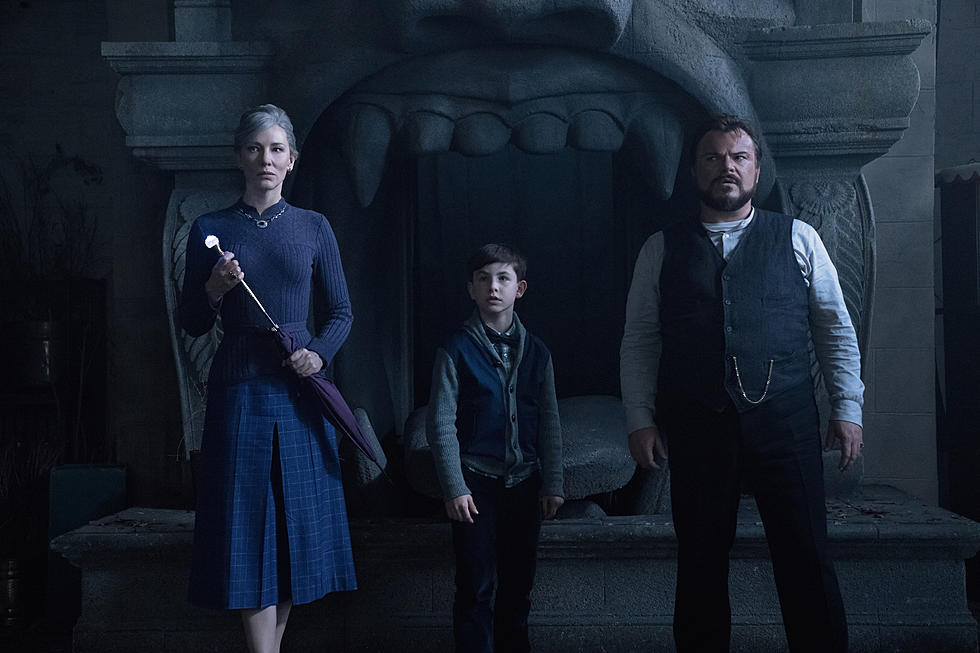
Cate Blanchett Borrowed a Technique From Terrence Malick To Make ‘Manifesto’
Cate Blanchett continues to mesmerize and surprise us. She can give dramatic performances as riveting as the ones in Blue Jasmine and Carol, transform into a decadent menace as Cinderella’s evil stepmother, then play a Marvel villain in Thor: Ragnarok. But on the off-chance you’re not yet totally sold on Blanchett’s otherworldly versatility, her latest film will seal the deal.
In Manifesto, Blanchett plays 13 characters with a dozen different accents. The art film from German artist Julian Rosefeldt, which began as a gallery exhibit and is now being released as a 95-minute feature, features Blanchett as a homeless man, a grade school teacher, a puppeteer, a scientist, a choreographer, a news anchor, and a punk musician, among others. On top of memorizing a hefty amount of dialogue about Dadaism, Surrealism, Futurism and other art movements, the Oscar winner only had 11 days to shoot the entire project, and on some days she played multiple characters. When I asked her how she pulled it off, Blanchett shared an anecdote about her work with Terrence Malick, and how she borrowed a technique of his to make Manifesto.
There have been many stories about the mysterious filmmaker and his unorthodox, script-free process – like how he gave Thomas Lennon a note card with an inspirational phrase on it in lieu of dialogue in Knight of Cups. Blanchett, who appeared in Knight of Cups with Christian Bale and Song to Song alongside Ryan Gosling, shared an interesting tidbit about Malick’s experimental process that involved reading his actors poetry via an earpiece:
I’d just recently come from doing a little bit on a Terrence Malick film and he was really interested in the actors having earwigs in. Obviously Terry writes reams and reams of poetry, and you never know whether it’s going to be in the film or not in the film. So I had him in my ear reading Heidegger and bits and snatches of things. And so I’d be saying – I’d be like George Bush during the presidential debates – I’d be saying Terry’s lines to Christian [Bale]. And then, ‘Sorry, what was that Terry?’
That gave Blanchett the idea to do something similar for Manifesto. At the end of all 13 shorts in Rosefeldt’s film, Blanchett turns to the camera to recite a monologue in a high-pitched, monotonous tone. To make sure she maintained the same tone of voice, she recorded each monologue then listened back via an earpiece to recite them again for the camera:
Because there’s so much text with the pitch-tone, the night before I would record it in a very neutral, measured, slow way so that then when the pitch-tone moment came up, which was in my ear, [it] would switch on, I’d hear my voice and I’d be able to [says in monotoned voice] ‘pitch da da da and be listening to this.’ It was very, very, very technical, actually.
One challenge for Blanchett during the project was trying to remove herself from each of her characters. Despite using a variety of accents, from Canadian to New Yorker, the monotone voice at the end of each segment is essentially Blanchett’s natural Australian accent. She referenced the neutral mask acting exercise she learned in drama school, where an actor tries to separate their character from themselves. “I was very frustrated because the inner voice and the connected tissue that’s really clear in the linear version is my voice, this is my natural accent,” she said. “It’s almost like I wanted to make it more neutral, and unfortunately you can never truly eradicate yourself.”
Do all the Marvel movies and experimental films you want Cate Blanchett, just please don’t eradicate yourself. Manifesto opens in limited release on May 10.
More From ScreenCrush









